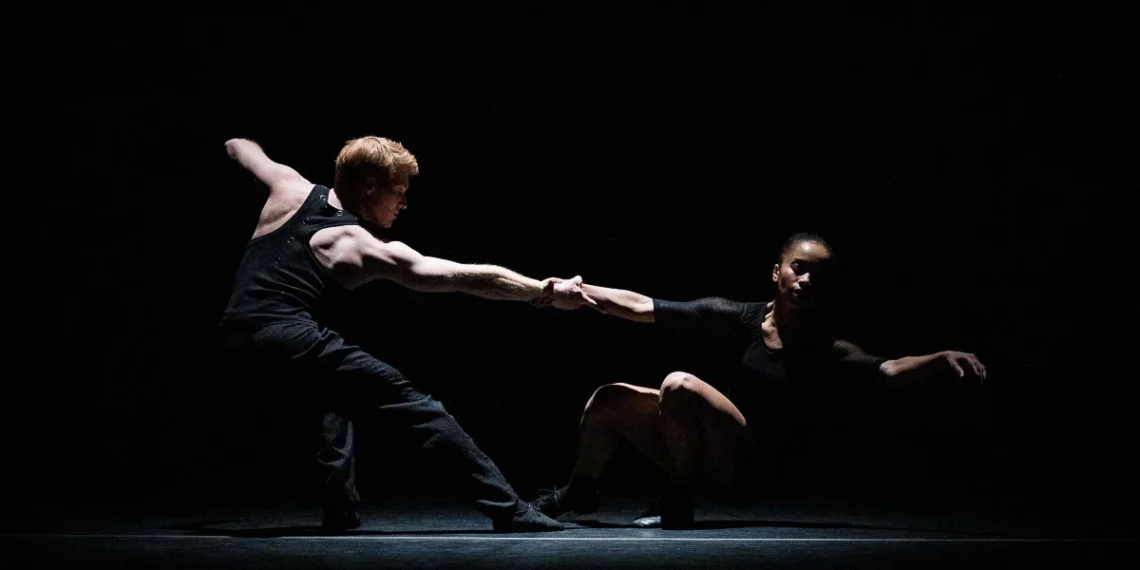Twyla Tharp Dance Diamond Jubilee Review
March 13, 2025 | New York City Center – New York, NY, USA
Rather than trying to pack a 60-year career into one night, the two pieces chosen for the Twyla Tharp Dance Diamond Jubilee at New York City Center are pulled from seasons of Tharp’s career, marked by almost three decades of separation.
And yet, the works say less about what she has accomplished and more about what she still has yet to say. Her marathon of a career is still going.
Tharp is no stranger to marathons, her most famous perhaps In The Upper Room to Philip Glass’s intense 39-minute pulsing score.
Fittingly, the show closes with a new work set to Glass (evoking hints at Upper Room’s legacy), allowing us to see yet another, seemingly unending, glimpse into Tharp’s genius.
You may also like...
ABT The Winter’s Tale Review: Familiar Steps, Fearless Chemistry
As The Winter's Tale unfolded, it was the combination of a large production team and the dancers’ deep commitment to character that gave the ballet its depth.
Chamber Dance Project Red Angels Review: Chamber Dance Delights at Harman Hall
Chamber Dance Project's mission - as demonstrated in Red Angels - has always been to showcase the interplay between dancers and live music.
Twyla Tharp Dance Diamond Jubilee Review
She tests endurance, challenging herself, her dancers, and the superb key-playing of pianist Vladimir Rumyantsev, by opening with an hour-long work set to Beethoven’s 33 Diabelli Variations, featuring consecutive piano miniatures each ranging between thirty seconds and three minutes.
Tharp emerges a victor by building her own variations upon Beethoven’s, evading any risk of tedium.
In Diabelli, which premiered in 1998, Tharp injects punctuation marks in every step. Fierce, nose-to-nose standoffs between dancers are rigid brackets, long patterned sequences are commas packed against each other, dancing into the wings are ellipses. Everything feels precise and purposeful in a singular language Tharp has constructed.
Speaking that language is one thing, having dancers who understand it is another. This is a group of first-class dancers, talent ranging from principal ballet dancers to Juilliard graduates, and they take her punctuation and deliver it in bold.

Dressed in sleeveless tuxedo bodysuits designed by Geoffrey Beene, the costumes evoke a past-tense posture, almost eighties-like despite the millennia cusped premiere date. Gender agnostic, the formal dress code, deformalized by the bare shoulders, resembles a group of off-duty orchestra conductors.
When Tharp drapes dancers across shoulders and passes them through partner’s legs, the bow-tied conductors conjure images of musical notes dripping down the horizontal staff of a page of music. It is visual pleasure courting auditory delight.
In Slacktide, it is hard to know if or when Tharp is teasing us. Set to Glass’s Aguas da Amazonia, reflections of In The Upper Room and Diabelli echoed in the work.
This sense of familiarity is not only present in the basso continuo music but in moments like the blips of symmetry between two partnering couples splitting center stage, reminiscent of Upper Room’s “bomb squad” couples. A two tiered spinning circle and the hard-elbowed hands on hips from Diabelli had brief regenerations but came and went like a vanishing tide.
The ambiguous symbolism of the repeated movements, neither direct or indirect, added to the mystery of the work.
The dancers, ten of which were also in the first piece, finished strong, as if they hadn’t just danced for an hour. Reed Tankersley was reckless and wild in swirling abandon. Miriam Gittens, who completed multiple turns in extended relevé in Diabelli, revisited her polished lines and biting precision. Marzia Memoli, a dancer with Martha Graham, brought a shape-shifting non-newtonian quality to her approach which smoothed out the rippling choreography.
As the dancers’ movements reflect Tharp’s evolving artistry, the lighting, costumes, and music amplify the contemporary texture.
High-contrast lighting from Justin Townsend and a variety of black athleisure designed by Victoria Bek lean into the modern tone through horizontal beams of light and slouchy outfits, the stark opposite of Diabelli’s bow-tied tuxedo.
The marimbas, xylophones, and synthesizers in Glass’s metronomic music, played by Third Coast Percussion, oscillate between present and past as Glass unapologetically draws from his former work.
All this paired with Tharp’s softened arms, sunken plies, and the breaking of the fourth wall, culminates in an ambience of humanity. There is almost nothing as inexplicable as life itself and Slacktide neither arrives at an answer nor dodges the question. It merely exists.
This season of Twyla feels mysterious, retrospective, and futuristic all at once, but more than likely it is another facet on the diamond of her career. It is clear she has more she wants to cut.
Featured Photo for the Twyla Tharp Dance Diamond Jubilee of Miriam Gittens and Oliver Green-Cramer in Twyla Tharp’s Slacktide. Photo by Christopher Duggan.









